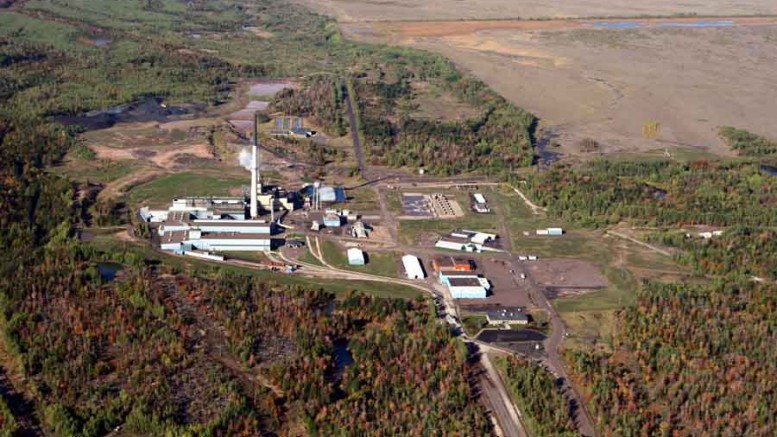Highland Copper (TSXV: HI; US-OTC: HDRSF) is expanding its footprint in northern Michigan with the acquisition of the White Pine copper project, 100 km southwest of its Keweenaw copper project.
Under an agreement with Copper Range Co., a subsidiary of First Quantum Minerals (TSX: FM; LSE: FQM), Highland will issue 3 million shares — or 5.4% of its outstanding share capital — to Copper Range in exchange for White Pine.
It will also give Copper Range an amount equal to half of one cent for the first 1 billion lb. proven and probable reserves of copper, and one quarter of one cent for each additional pound of proven and probable reserves of copper, in either cash or shares. First Quantum inherited White Pine as a legacy from Inmet Mining.
Executive chairman Dave Fennell notes that northern Michigan is highly prospective, and the acquisition not only complements the 543S and G-2 deposits at its Keweenaw project, but helps burnish the junior’s reputation as an emerging copper-exploration and development company in the area. And White Pine, he notes, has a lot of copper.
“Historically there has been almost 5 billion lb. copper produced there,” Fennell says in a telephone interview after the acquisition was announced. “That constitutes an extremely long history, and the majority of the resource is still there in place. The ultimate resource has not yet been defined.”
If things go well at White Pine, he continues, it will become “the centre of gravity” for Highland, with high-grade ore from the company’s two deposits at Keweenaw feeding a central mill.
Adding to White Pine’s allure is the existing infrastructure, which includes a CN Rail spur, a paved highway, a 40-megawatt power plant, a copper refinery, a water pipeline to Lake Superior and a water-processing plant.
Highland describes the White Pine deposit as a sediment-hosted stratiform copper deposit that is similar to those found in the Central African Copperbelt, the Kupferschiefer of Germany and Poland, the Troy-type deposits of northwestern Montana, and Orvana Minerals’ (TSX: ORV; US-OTC: ORVMF) Copperwood deposit, 40 km west of White Pine.
The deposits are all characterized by strong stratigraphic control and continuous mineralization over great distances. At White Pine, mineralization of economic importance is hosted principally in the Proterozoic Nonesuch formation, a regionally extensive sedimentary rock exposed for 200 km along the north side of the Keweenaw Peninsula of northern Michigan. The mineralization at White Pine is mostly disseminated.
Historic mining at White Pine was concentrated on two siltstone-shale sequences 2 to 3 metres thick, in the basal 20 metres into the Nonesuch formation.
Copper Range acquired the White Pine mine in 1937, and underground mining and the sulphide flotation began in 1952. Low copper prices forced the previous operators to close down the mine in 1995, however, after producing 4.5 billion lb. copper. Silver was alloyed to the copper but wasn’t recovered until 1982.
A historic resource estimate of what remains at White Pine outlines 208.2 million short tons (188.9 million tonnes) averaging 1.04% copper for 4.3 billion lb. copper. Of that amount, Highland says, 144.9 million in-situ tons (131.6 million tonnes) averaging 1.02% copper, or 3 billion lb. copper, are located in a deposit northeast of the historic mine and separated from the old workings. The non-National Instrument 43-101 compliant resource was based on 526 diamond drill holes spaced 400 to 1,000 metres apart.
“We pretty much know what to expect at White Pine,” Fennell says, “and you have to evaluate these types of deposits within current economic parameters — not the economic parameters that prevailed at the time when the mine was closed.”
Mick Carew and Stefan Ioannou of Haywood Securities comments in a research note that the resource’s expansion potential “is high, given the prolific nature of the Nonesuch formation on the 110 sq. km property package.”
The mining analysts note that if White Pine’s entire 4.3 billion lb. historic resource were to be converted to reserves, “Highland would be required to pay Copper Range US$13.25 million — arguably a non-issue for a company that would be sitting on a permitted, multi-billion pound in-situ copper inventory located in a stable mining jurisdiction.”
The copper mineralization at White Pine — dominated by chalcopyrite — is similar to that of Highland’s 543S and G-2 deposits on the 36.42 sq. km Keweenaw project. (The 543S and G-2 deposits are 18 km apart.)
The company has completed 39 drill holes (3,801 metres) at G-2, and the most recent results included 15 metres grading 2.46% copper and 3.2 grams silver per tonne, and 14 metres of 4.89% copper and 4.7 grams silver. G-2 consists of at least five, near-vertical lens-like zones of chalcocite hosted by the Portage Lake lava series.
In a Nov. 14 update on exploration at Keweenaw, Highland told investors that it has started work on a resource estimate for the 543S deposit, where the company has drilled 171 diamond drill holes for 26,972 metres since July 2012.
Highland has the right to acquire 65% of the Keweenaw project by completing a feasibility study on the project by the end of October 2015.
Recently the company identified two new mineralized zones near the 543S deposit: the 24 West zone, 700 metres southwest of 543S; and Section 3200 East zone, 500 metres east of 543S.
Drill results from the 24 West based on a 0.20% copper cut-off grade include 9.8 metres of 2.63% copper and 7.8 grams silver per tonne, 6.9 metres of 4.43% copper and 4.7 grams silver, and 8 metres of 3.92% copper and 13.4 grams silver.
At Section 3200 East zone, drilling returned a 23.5-metre intercept averaging 1.52% copper and 3.9 grams silver.
As of Sept. 30 Highland held $4.3 million in cash.
The junior has a market capitalization of nearly $29 million. At press time its shares were trading at 52¢, within a 52-week range of 12¢ to 68¢.


Be the first to comment on "Highland Copper to acquire White Pine"